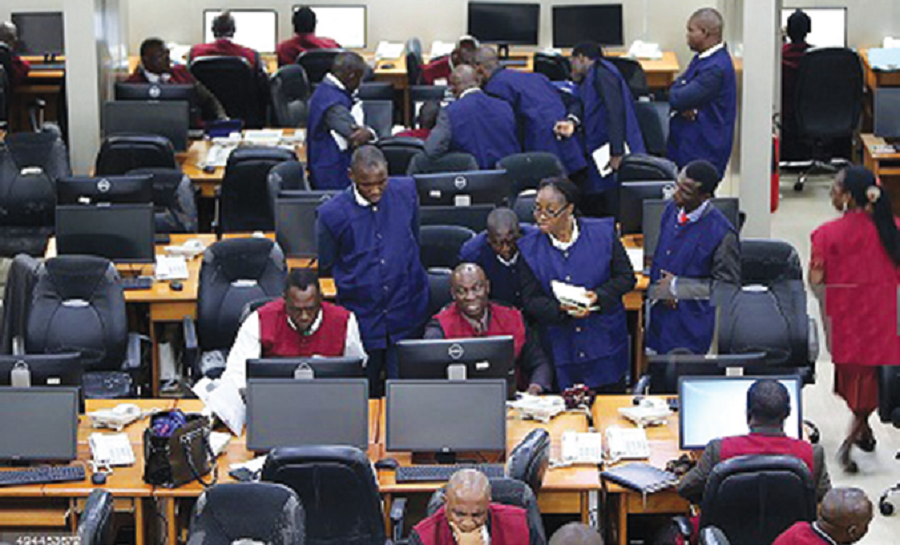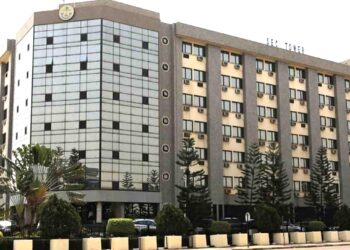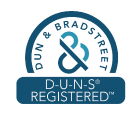BUA Cement and Dangote Cement are the two giant cement producers in Nigeria and among the stocks worth over one trillion Naira (SWOOT) on the Nigerian Stock Exchange (NGX).
While Dangote Cement is the second most capitalized stock with a market capitalization of N10 trillion, BUA Cement ranks fifth with a market capitalization of N5.49 trillion.
Both companies released their latest financial results for the nine months ending September 30, 2025.
In October 2025, both companies saw significant share price movements.
- Dangote Cement’s share price gained 26% (N2.3 trillion), bringing its YTD gain to 38%.
- BUA Cement saw a 13% gain (N677 billion) in October alone, with its YTD gain reaching 94%.
- However, both stocks lost 10% in November, moderating their YTD gains to 24% for Dangote Cement and 74% for BUA Cement.
Verdict
This performance shows that in terms of share price valuation, BUA Cement has outperformed Dangote Cement.
Let us look at how they fared in terms of financial performance.
Production
In the first nine months of 2025, Dangote Cement produced 19.9 million tonnes of cement, slightly down from 20.5 million tonnes in the same period in 2024.
- This slight dip in output was largely due to maintenance shutdowns and disruptions at some plants.
- The company’s total annual capacity remains 52 million tonnes, and over the past five years, Dangote Cement has seen a CAGR (Compound Annual Growth Rate) of 6% in production volume.
In contrast, BUA Cement increased its production significantly in 9M 2025, reaching 13.2 million tonnes, up from 10.4 million tonnes in 9M 2024, reflecting a 27% year-on-year growth.
- This growth was driven by operational improvements in the Obu and Lafia plants, where upgrades reduced shutdowns and improved efficiency.
- Despite this strong growth, BUA Cement’s production still lags Dangote’s, although continued investments in capacity expansion and plant upgrades should gradually close this gap.
Verdict:
Dangote Cement leads in production volume and scale, but BUA Cement stands for its impressive growth in production.
Revenue and drivers
From 2020 to 2024, Dangote Cement’s revenue grew from N1.03 trillion to N3.58 trillion, reflecting a CAGR of 37%.
- In 9M 2025, Dangote’s revenue reached N3.15 trillion, a 23% YoY growth compared to N2.561 trillion in 9M 2024.
- This growth was largely driven by pricing, given the decline in production and sales volume.
On the other hand, BUA Cement’s revenue climbed from N209.47 billion in 2020 to N876 billion in 2024, with a CAGR of 43%.
- In 9M 2025, BUA Cement’s revenue surged to N858.7 billion, a 47% YoY increase from N583 billion in 9M 2024.
Verdict:
- BUA Cement wins in terms of growth, with a remarkable 47% growth in 9M 2025, surpassing Dangote Cement’s 23% growth.
- However, Dangote Cement dominates in terms of absolute revenue and pricing power, leveraging its scale to maintain solid growth despite lower volumes.
Cost management and margins
In 9M 2025, Dangote Cement posted a gross profit of N1.87 trillion, a 41% YoY increase, maintaining a strong gross margin of 59%.
- Operating profit was N1.227 trillion, up 64% YoY, with an operating margin of 39%.
- Finance costs fell sharply, driven by a 99% drop in net FX losses, which significantly strengthened profitability.
- The pre-tax profit margin stood at 33%, showcasing a robust and stable earnings profile.
BUA Cement, in the same period, also posted a strong performance:
- Gross profit rose to N429 billion, up 137% YoY, with a gross margin of 50%.
- Operating profit margin stood at 43%, higher than Dangote’s 39%, indicating greater efficiency in converting gross profit into operating profit.
- However, finance costs increased by 75% to N56 billion, which weighed on overall profitability.
- Pre-tax profit increased by 39% YoY, reflecting improved operations despite higher finance costs.
Verdict: The decision is split:
- Dangote Cement wins in absolute profit and overall profitability.
- BUA Cement wins in efficiency and margins.
Profitability and cash flow
Dangote Cement has shown consistent growth in profitability.
- Profit after tax rose from N276 billion in 2020 to N503.247 billion in 2024, reflecting a CAGR of 16.2%.
- In 9M 2025, Dangote’s profit after tax surged to N743.263 billion, a massive 166% YoY increase, driven by strong market demand, higher pricing, lower FX losses, and resilient margins.
- The company also generated strong operating cash flows, with net cash flow from operating activities growing by 143% YoY to N1.291 trillion.
BUA Cement also achieved impressive profit growth, but at a much slower pace:
- Profit after tax grew from N71 billion in 2020 to N73.909 billion in 2024, reflecting a 1.23% CAGR.
- In 9M 2025, BUA Cement achieved a 492% YoY increase, reporting N289.855 billion in profit after tax, driven by stronger volumes, improved margins, and higher pricing.
- However, BUA’s net cash flow declined by 45% YoY, falling to N221.137 billion due to working capital challenges.
Verdict:
- Dangote Cement wins here with consistent profitability and strong cash flow generation.
- BUA Cement showed impressive growth, albeit with challenges in working capital management.
Balance sheets
Dangote Cement’s total assets stood at N5.74 trillion, with N2.436 trillion in equity, resulting in an equity multiple of 2.36x.
- Borrowings were N1.32 trillion, a 47% reduction compared to the previous year. This brought its debt-to-equity ratio down to 0.54, significantly improving from 1.15 in December 2024.
BUA Cement reported total assets of N1.63 trillion, with N609 billion in equity, reflecting an equity multiple of 2.68x.
Its borrowings stood at N472.57 billion, resulting in a debt-to-equity ratio of 0.78, down from 1.27 in December 2024.
Verdict:
- Both companies have made significant strides in improving their financial health.
- However, Dangote Cement leads in balance sheet strength and debt management.
Dividend history: Who rewards investors?
Dangote Cement has been consistent in dividend payment. Over a decade, the company has paid dividends.
- Dangote Cement paid N30 per share in 2024, amounting to N502.56 billion, representing a 99.86% payout ratio.
- Given the 9-month 2025 profit already exceeding 2024’s full-year profit, it is expected that the dividend per share (DPS) for 2025 could rise to N54.
BUA Cement has been consistent in dividend payment.
- It paid N2.05 per share in 2024, amounting to N69.42 billion, representing 93.93% of total profit.
- With the 9-month 2025 profit already N289.855 billion, the expected DPS for 2025 is N10.72.
Verdict:
Dangote Cement leads in dividend payouts and payout ratio, offering higher returns for shareholders.
Valuation: What are they worth?
Dangote Cement’s market cap is N10 trillion, with shares trading at N594, reflecting a 21.41% increase YTD.
- Its P/E ratio of 10.4x indicates solid fundamentals and investor confidence at a fair valuation.
BUA Cement’s market cap is N5.49 trillion, with a 74% gain YTD, but its P/E ratio of 17.4x suggests that it is trading at a premium, reflecting high growth expectations but potentially higher risk.
Verdict:
Dangote Cement wins in terms of valuation, as its stock is more reasonably priced relative to its earnings.
Bottom line
In the battle between Dangote Cement and BUA Cement, both companies demonstrate impressive achievements.
Dangote Cement leads in terms of scale, profitability, cash flow generation, and dividend payouts, solidifying its position as the dominant player in the market.
However, BUA Cement excels in growth and margins, with strong improvements in production.


















